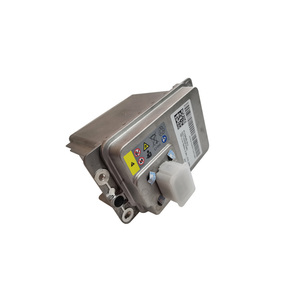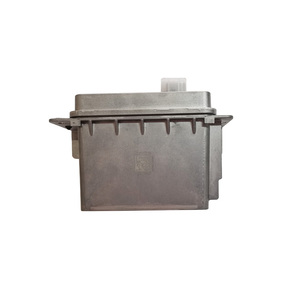(3143 products available)

















































































































































































































1. Lithium-Ion Batteries
Li-ion batteries have become popular in modern vehicles due to their lightweight and high energy density. They charge quickly and discharge steadily, supplying a consistent power flow. Their lower self-discharge rate means they can sit unused for extended periods without losing charge. However, they are on the pricier side compared to other options.
2. Start-Stop Batteries
Start-stop batteries are designed explicitly for vehicles with start-stop technology. This technology automatically turns the engine off when the vehicle is stationary to save fuel and emissions and restarts it quickly when needed. Batteries for such cars have high cycle durability to support frequent engine restarts. They also have good energy recovery capabilities to harness energy during braking. Absorbent Glass Mat (AGM) and Enhanced Flooded Batteries (EFB) are common types for start-stop systems.
3. Deep Cycle Batteries
Deep cycle batteries are another type of 16v car batteries. Unlike regular batteries that provide short bursts of high power, deep cycle batteries are designed to provide a steady flow of power over a more extended period. This feature makes them ideal for running auxiliary systems like infotainment, navigation, or even power tools in the car. They are prevalent in electric vehicles and hybrids that rely on batteries for most of their power needs. Deep cycle batteries can be further divided into flooded, AGM, and gel types, each with specific applications and advantages.
4. Gel Batteries
Gel batteries use a silica additive to turn the electrolyte into a gel-like substance. This design minimizes spillage risks and makes them maintenance-free. Gel batteries are less prone to corrosion and can operate in partially discharged states without damage, unlike other lead-acid batteries. Their unique construction gives them a longer cycle life, making them suitable for applications requiring deep discharges.
5. Calcium Batteries
Calcium batteries incorporate calcium in their lead plates. This addition reduces gassing during charging, improving their performance and lifespan. They require less maintenance than traditional lead-acid batteries. Calcium batteries excel in high-temperature conditions and have a low self-discharge rate, ensuring reliable performance even after prolonged inactivity. Due to these advantages, they are suitable for various applications, including vehicles with high power demands.
People need to know the specifications of 16-volt batteries before purchasing them. Here are some specifications to look out for:
Voltage:
The nominal voltage of 16v batteries is 16 volts. This voltage is suitable for powering loads that need a higher voltage than 12-volt systems offer.
Capacity:
The capacity of a 16v battery determines how long it can power a load before needing a charge. It is measured in ampere-hours (Ah). Common capacities range from 50Ah to 200Ah or more. A higher capacity provides more energy but requires a longer charging time.
Size and weight:
16v batteries come in different sizes and weights according to their construction and capacity. Their weight ranges from 5 to 40 kg or more. The size and weight are significant for portability and the space available for installation.
Battery type:
Different types of 16v batteries are available, such as lead-acid, lithium-ion, and nickel-metal hydride. Each type has its characteristics, such as cycle life, self-discharge rate, and operating temperature range.
Discharge depth:
The maximum depth of discharge (DoD) indicates how much energy can be drawn from the battery before recharging. A higher DoD provides more usable energy but can shorten the battery's life. Typical values for 16v batteries are 80% or 90% DoD.
Charge time:
16v batteries take several hours to recharge fully, depending on the charger and battery's capacity. Fast-charging options are available for some models, allowing for shorter charging times.
Cold Cranking Amps (CCA):
This is the battery's ability to crank an engine in cold temperatures. The CCA of 16v batteries varies based on the brand and model. Most 16v batteries have a CCA ranging from 600 to 1000 amps or more.
Maintaining a 16v battery is crucial for ensuring longevity and optimal performance. Here are some maintenance tips:
1. Regular inspection:
Users should check the battery regularly for physical damage, leaks, or corrosion. They should also check the connections to ensure they are tight and secure.
2. Keep it clean:
Cleaning the external parts of the 16v battery is very important. Dirt and moisture can cause corrosion and reduce the battery's lifespan. Users should use a damp cloth to wipe the battery clean.
3. Proper charging:
Always charge the battery with a suitable charger. Overcharging or undercharging can damage the battery and reduce its capacity. Users should follow the manufacturer's instructions for charging procedures and settings.
4. Temperature considerations:
16v batteries should be kept at room temperature. Avoid exposing them to extreme heat or cold. High temperatures can speed up chemical reactions and shorten the battery's life. Low temperatures reduce the battery's performance and capacity.
5. Avoid deep discharges:
Avoid discharging the battery deeply, as this can damage it and reduce its lifespan. Users should recharge the battery regularly to maintain optimal performance.
6. Replace when necessary:
Even with good maintenance practices, batteries have a finite life cycle. If the battery needs more performance or capacity, it may be time to replace it. Follow the manufacturer's recommendations for battery replacement intervals.
There are several factors to consider when choosing a suitable 16v car battery for a specific vehicle. These factors include:
Size
16V batteries are available in various sizes and dimensions. The batteries have to fit inside the car and also correspond to the battery cable connections. The right size ensures the 16V battery will function well and avoid any issues. When choosing a battery, consider the battery group size and the car's make, model, and year.
Discharge Depth
Different 16V batteries offer different DoD ratings. For example, a 16V AGM battery may have a DoD of up to 90%, while a 16V lithium battery may have a DoD of 80%. This is because lithium batteries can deliver more power than lithium batteries. When choosing a 16V battery, consider how much discharge depth is appropriate.
Capacity and Power
Capacity and power are important considerations when choosing a 16V battery. The battery capacity and power should agree with the vehicle's requirements. This includes all the vehicle's electrical components, such as the sound system, GPS navigation, and other accessories. A larger capacity and power 16V battery will be suitable for a vehicle with many electrical components and systems. On the other hand, a small 16V battery will be appropriate for a vehicle with fewer electrical components.
Cold Cranking Amps (CCA)
When choosing a 16V battery, consider the CCA rating. The CCA rating should be high if the car is used in cold climates. This is because the battery needs to crank the engine even in low temperatures. On the other hand, a 16V battery with a lower CCA rating can be chosen in warm climates.
Reserve Capacity (RC)
Reserve capacity is an important factor when choosing a 16V battery. The RC determines how long the battery can last without draining if there is an emergency. A higher reserve capacity 16V battery will be suitable for areas with extreme weather conditions and emergencies. When choosing a 16V battery, consider the RC rating based on the environmental conditions.
Replacing a 16-volt battery in a vehicle is a simple process. With the right tools, it can be done in the garage or at home. Before then, here are the necessary tools and safety precautions:
Steps:
Q1: What is a 16-volt battery used for?
A1: A 16-volt battery is commonly used in high-performance applications, especially in racing and modified vehicles, where more power is needed to support advanced electrical systems and high-demand components.
Q2: Can I upgrade to a 16-volt battery?
A2: While it is possible to upgrade a standard 12-volt system to a 16-volt battery system, it is essential to ensure that all components, including the starter, alternator, and electrical systems, are compatible with the 16-volt output. This is typically recommended only for high-performance applications.
Q3: How does a 16v car battery differ from a 12v battery
A3: The primary difference is the voltage output. A 16v car battery provides higher voltage and is used for high-performance applications, while a 12v battery is standard in most cars. The 16v battery can power more demanding electrical components and provide a quicker, stronger cranking for the engine.
Q4: How long does a16v car battery last?
A4: The lifespan of a 16v car battery depends on usage, maintenance, and environmental conditions. Typically, it lasts 2-5 years, but proper care can extend its lifespan.
The keyword 'car battery 16v' exhibits a notable trend in web search volume, averaging 90 monthly web searches with significant fluctuations observed over the past year. The data highlights a 29% increase in web searches both in the three-month and one-year timeframe.
Analyzing the monthly search data for 'car battery 16v' shows a pattern of variability. Starting from December 2023 with 70 web searches, there was a dip in January to 50 web searches, followed by a rise back to 90 web searches in February. This pattern of fluctuation continues, with peaks reaching up to 110 web searches in June and October, and valleys dropping to 50 web searches in January. This indicates that while the average monthly web searches remain consistent, the actual numbers vary significantly from month to month.
The web search volume for 'car battery 16v' does not display a steady increase or decrease but rather shows a dynamic trend with several peaks and troughs throughout the year. This suggests that factors influencing web search volume for this keyword could be tied to seasonal variations, market demands, or possibly even consumer awareness campaigns that occur at specific times of the year. Understanding these patterns helps businesses and marketers in the vehicle parts and accessories category to better target their audience and plan their inventory or promotional strategies accordingly.